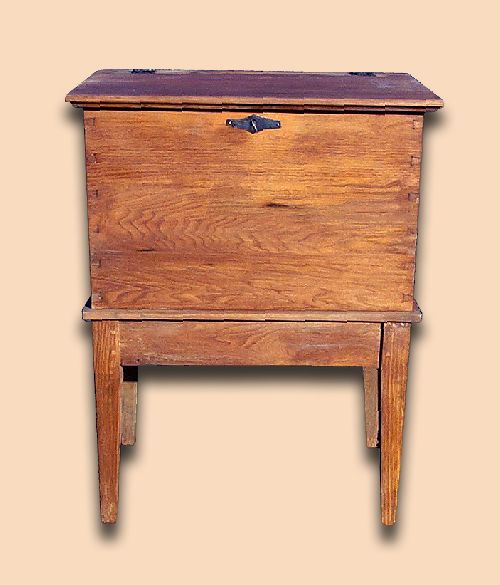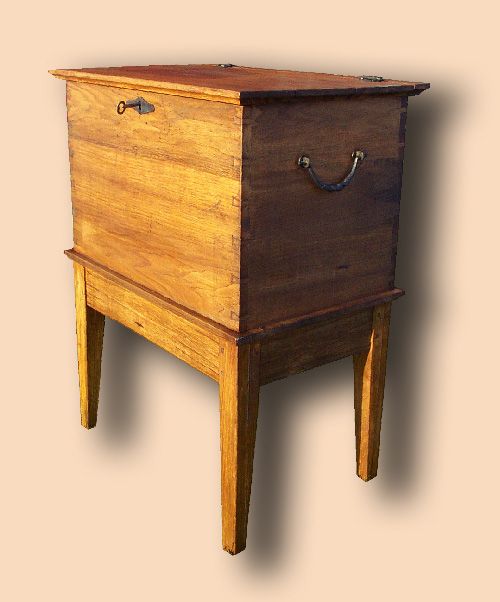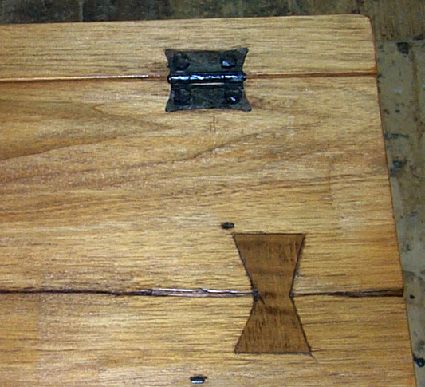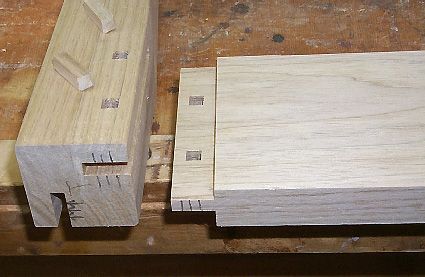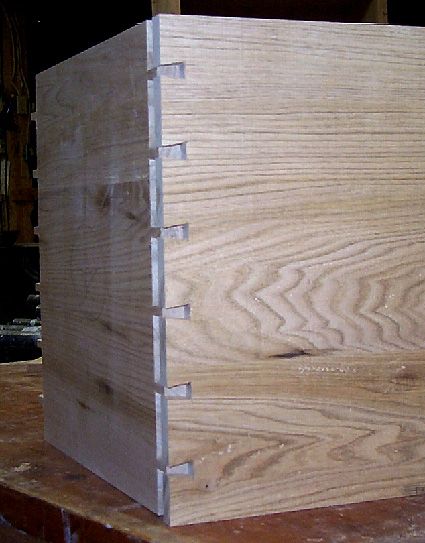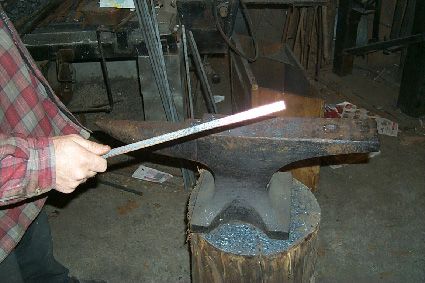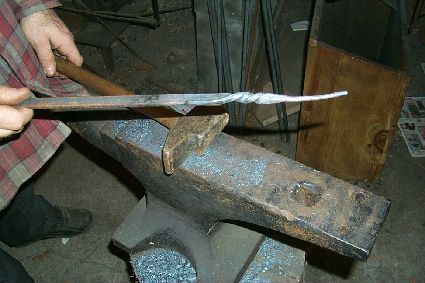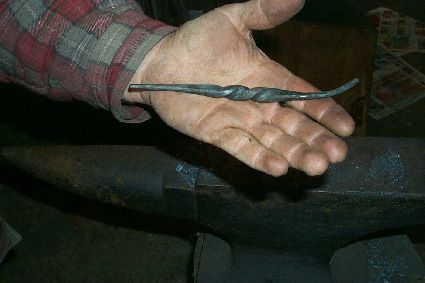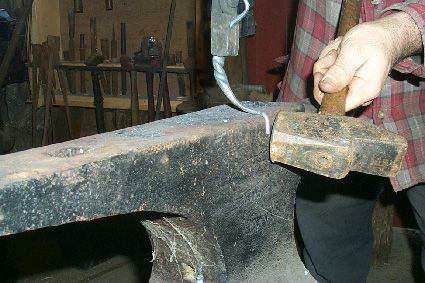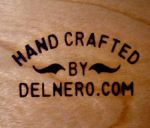Early Settler's Butternut Rustic Sugar Chest Reproduction
with Hand Forged Hardware
Early Settler's Rustic Furniture by Delnero Rustic Furniture
Custom Made Handcrafted Furniture
Not so long ago, obtaining sugar wasn't easy. It's difficult to believe that the commodity we have in almost everything
today was scarce and highly valued in the early part of the 19th century. It was so valuable that hired help could be
tempted to pinch a bit here and there. So local cabinetmakers rose to the occasion and the result was a specialized
piece of furniture - the sugar chest. This type of chest was built throughout the South - most notably in Kentucky,
Virginia, and Tennessee. An increased availability of sugar, along with a decline in price, reduced the need to
safeguard the commodity.
Offered in 25 different wood selections, this chest was built by hand, of American Butternut. The surfaces are hand planed, completely hand sanded, and finished with traditional Linseed Oil, as was done over a century ago.
A detail that gives a piece an authentic look and feel, we (if requested) will actually break a section, and repair it with period repairs. Here, a butterfly biscuit holds a broken top secure. Also, a close-up of a hand forged butterfly hinge.
A close-up of how the skirt boards are secured to the base legs. Mortise grooves are cut into the legs. Tennons are then cut into the skirt boards. The tennons want to fit rather snug into the mortise grooves. We then cut holes (round or square) in the legs and insert the skirt board into the leg. Marking the skirt board tennon holes location, we drill the tennon hole about 1/16" offset (closer to the shoulder of the skirt board) which will draw the two pieces securely together when the White Oak pins are driven into place.
A close-up of the hand cut dovetails and pins that will hold the sides and fronts of the chest together. After we're sure the parts are fit well enough to each other, we'll take it all apart to sand all the inside surfaces before gluing the dovetails together.
All the hardware is hand forged by us in Delnero's Blacksmith Shop. The steps of hand forging an end handle for the chest start with a 3/4" x 1/4" piece of wrought iron. We heat one end, and draw it out to a tapered shape. The end of the bar is about 1500 degrees!
After the end is drawn out, we heat up the iron and add a decorative twist in the center of the handle. We will then cut the bar, and draw out the opposite side.
Here, the handle has been drawn out on both sides, with the twist in the center.
Using more heat and the table edge of the anvil, the handle is formed to its final shape. After we're satisfied with the shape, the handle needs to be wire brushed to get any slag of its surface. The handle then goes back into the forge and heated to a low temperature of about 150 degrees. It is taken out and brushed completely with Bee's Wax. With care not to get the iron too hot, we heat the piece up until the wax just starts to smoke. It takes about 10 minutes to burn off most of the wax, leaving just enough to polish to a slightly shiny black finish.
Offered in 25 different wood selections, this chest was built by hand, of American Butternut. The surfaces are hand planed, completely hand sanded, and finished with traditional Linseed Oil, as was done over a century ago.
A detail that gives a piece an authentic look and feel, we (if requested) will actually break a section, and repair it with period repairs. Here, a butterfly biscuit holds a broken top secure. Also, a close-up of a hand forged butterfly hinge.
A close-up of how the skirt boards are secured to the base legs. Mortise grooves are cut into the legs. Tennons are then cut into the skirt boards. The tennons want to fit rather snug into the mortise grooves. We then cut holes (round or square) in the legs and insert the skirt board into the leg. Marking the skirt board tennon holes location, we drill the tennon hole about 1/16" offset (closer to the shoulder of the skirt board) which will draw the two pieces securely together when the White Oak pins are driven into place.
A close-up of the hand cut dovetails and pins that will hold the sides and fronts of the chest together. After we're sure the parts are fit well enough to each other, we'll take it all apart to sand all the inside surfaces before gluing the dovetails together.
All the hardware is hand forged by us in Delnero's Blacksmith Shop. The steps of hand forging an end handle for the chest start with a 3/4" x 1/4" piece of wrought iron. We heat one end, and draw it out to a tapered shape. The end of the bar is about 1500 degrees!
After the end is drawn out, we heat up the iron and add a decorative twist in the center of the handle. We will then cut the bar, and draw out the opposite side.
Here, the handle has been drawn out on both sides, with the twist in the center.
Using more heat and the table edge of the anvil, the handle is formed to its final shape. After we're satisfied with the shape, the handle needs to be wire brushed to get any slag of its surface. The handle then goes back into the forge and heated to a low temperature of about 150 degrees. It is taken out and brushed completely with Bee's Wax. With care not to get the iron too hot, we heat the piece up until the wax just starts to smoke. It takes about 10 minutes to burn off most of the wax, leaving just enough to polish to a slightly shiny black finish.
Open Daily 10:00 AM to 5:00 PM
Closed Sundays
Evenings by Appointment
Closed Sundays
Evenings by Appointment





